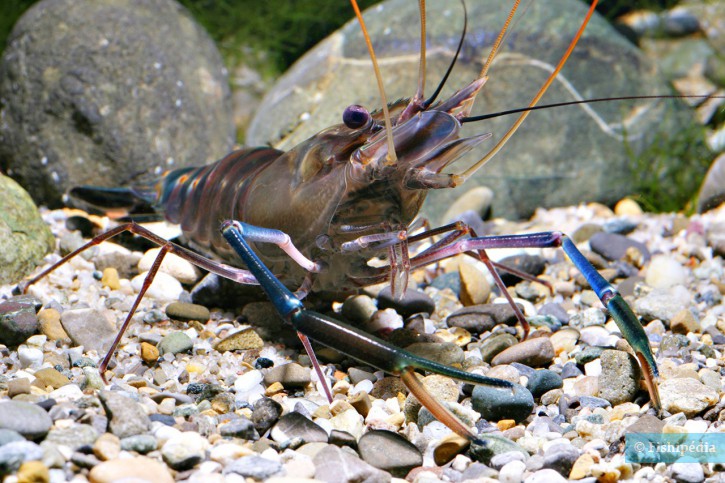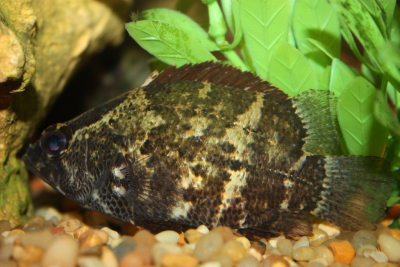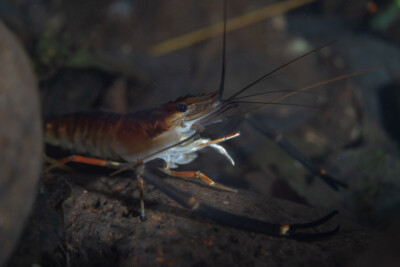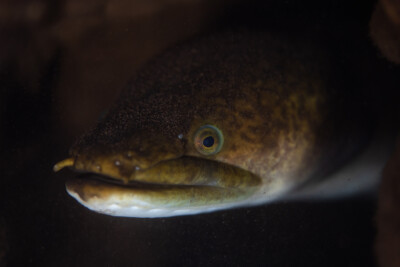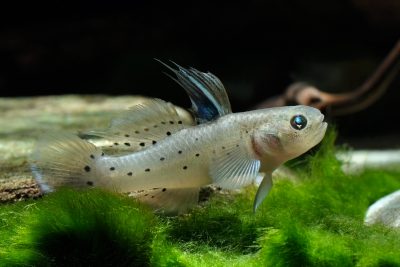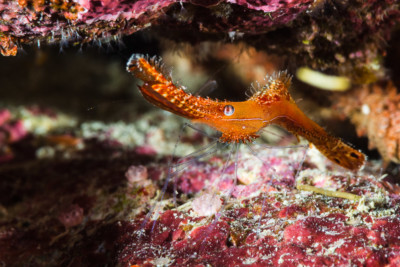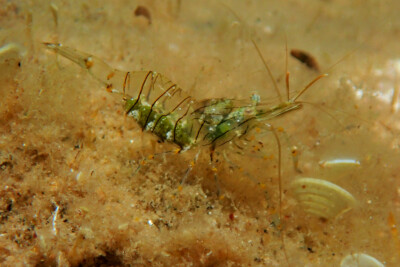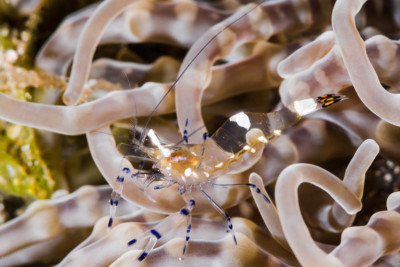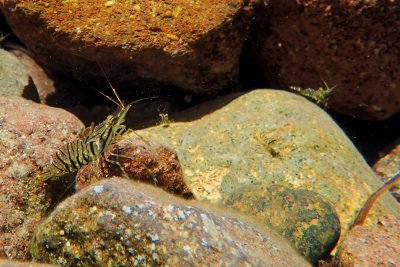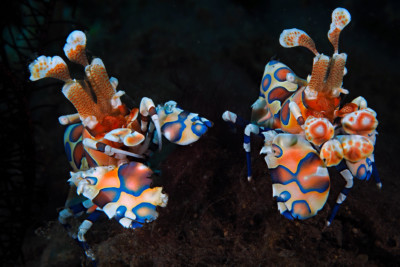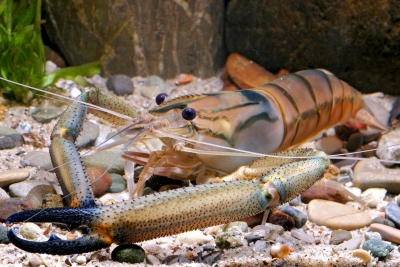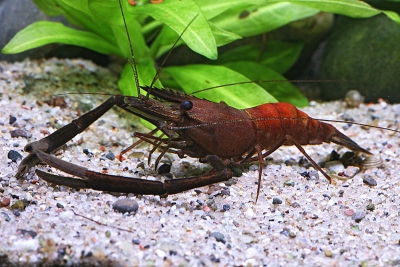giant river prawn
| Family | Palaemonidae |
|---|---|
| Genus | Macrobrachium |
| IUCN category (World) | LC |
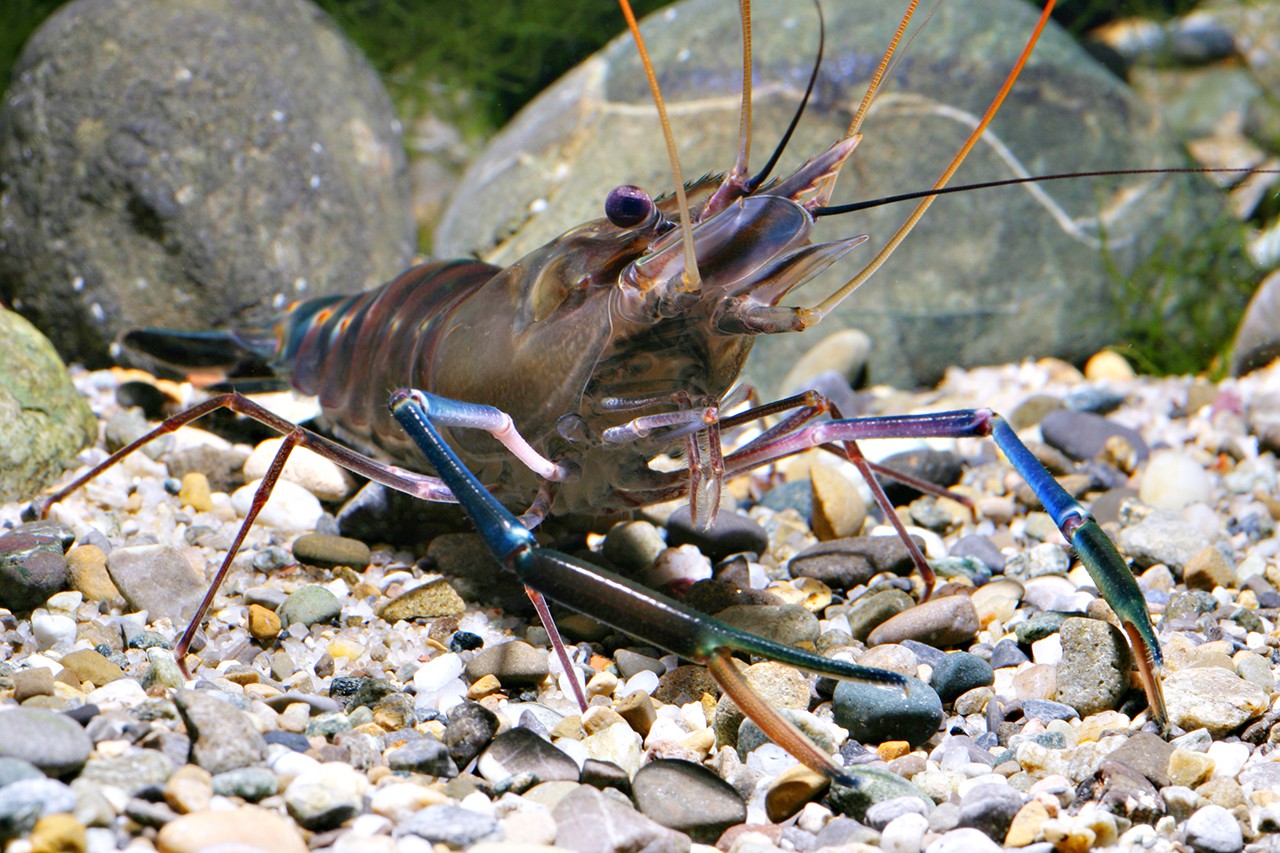

Introduction
Macrobrachium rosenbergii, commonly known as giant river prawn, is a fresh water crustacea.
This sheet is currently being prepared. The texts currently proposed come from our data model or are being drafted. To request priority for this content, you can write to us HERE.
Who is it?
Morphology
-
Average size25 cm
-
Maximum size32 cm
-
Average size25 cm
-
Maximum size32 cm
How to recognize this crustacea ?
The giant river prawn measures around 25 cm. The dominant males can however reach 32 cm.
Of elongated form, like all the shrimps, it has 5 pairs of legs and a segmented carapace at the level of the abdomen which ends in a tail in fan cut for swimming.
Sexual dimorphism
The adult male is bigger than the female.
Behaviour & Life cycle
-
Sociabilityliving in small groups
-
territorialNo
-
VenomousNo
-
Way of livingnocturnal
Like all crustaceans, The giant river prawn molts whenever it becomes cramped in its shell. Before the hardening of its new body, it is more vulnerable and spends a good part of its time hidden. This mechanism, very complex, allows the periodic renewal of the exoskeleton and part of the internal skeleton. It is also during the moult that the females become fertile.
The giant river prawn hunts in the stalk and is one of the predators of its biotope. Opportunistic, it does not hesitate to attack any smaller animal nearby.
The giant river prawn is a crustacea living in small groups naturally found near the bottom. This species is omnivorous . this crustacea lives mainly at night. Usually, it leaves its hiding place and starts to be active once it gets dark.
Although the giant river prawn is non-territorial, it is sometimes aggressive towards other species. In a constant quest for dominance, the dominant males of this species cannot stand each other. The battle between two individuals can be intense and violent. It will result in the submission and sometimes even death of one of the protagonists.
The cilia located on the legs and tail facilitate swimming, which is done in leaps when the abdominal muscles contract.
Reproduction
-
Migratory speciesYes
This species is amphidromous. It gives birth to larvae in fresh water which are immediately carried by the current of the rivers to the sea. These develop in salt water until a juvenile stage and then migrate from the sea to the interior of the land to continue their growth.
Harmless species
This species does not represent any particular threats to humans when encountered in its natural environment.
Origin and distribution
Conservation status of populations (IUCN)
What is its habitat?
Natural environment characteristics
-
Temperature22 - 29 °C
-
pH (acidity)7.5 - 8.5
-
gh (hardness)15 - 20
Biotope presentation
Species of the same biotope
To go further
Sources & Contributions
Participation & Validation
The Fishipedia team and specialist contributors are committed to providing high-quality content. However, although the information comes from scientific sources or testimonials from specialists, the cards may contain inaccuracies.
Translation
Translation done with the valuable contribution of our translators, who make this information available to a wider audience. We sincerely thank them for their commitment.
Scientific partners
Species of the same family
Same genus
Species of the same biotope
